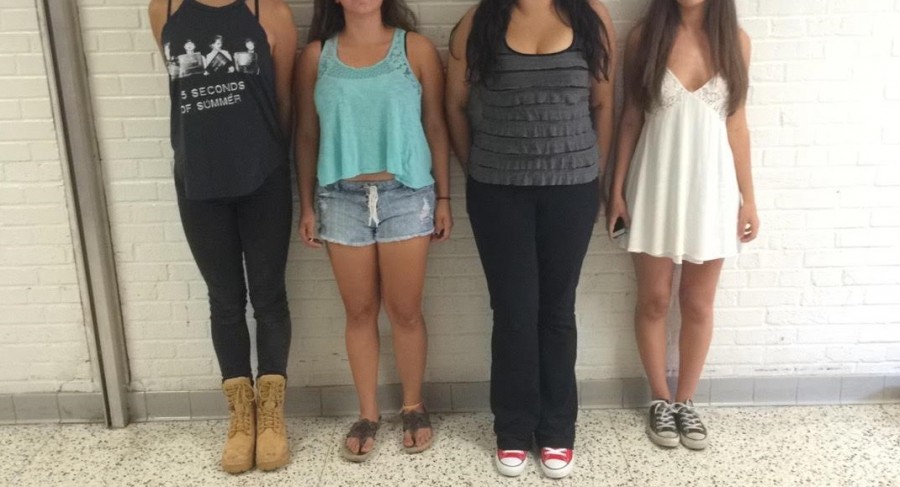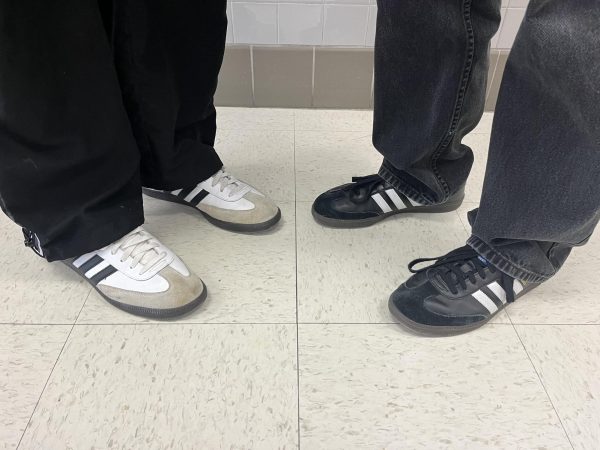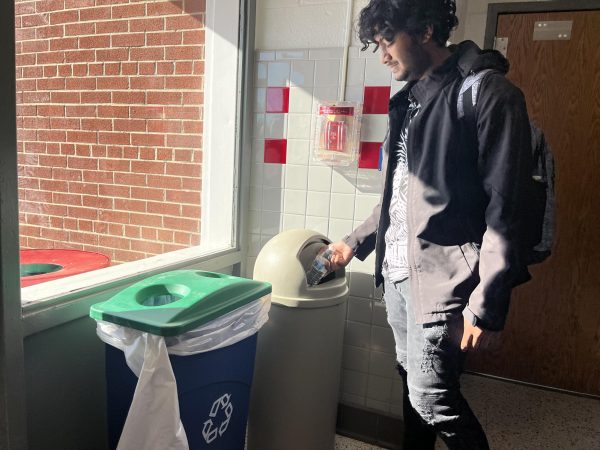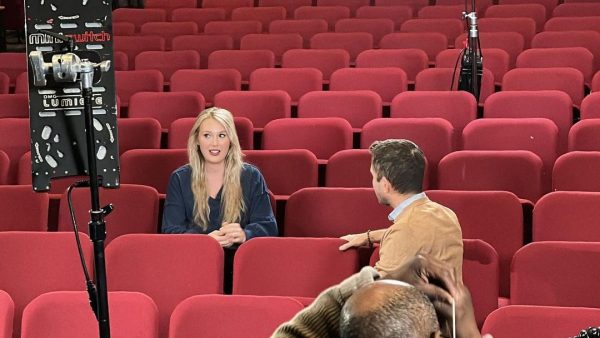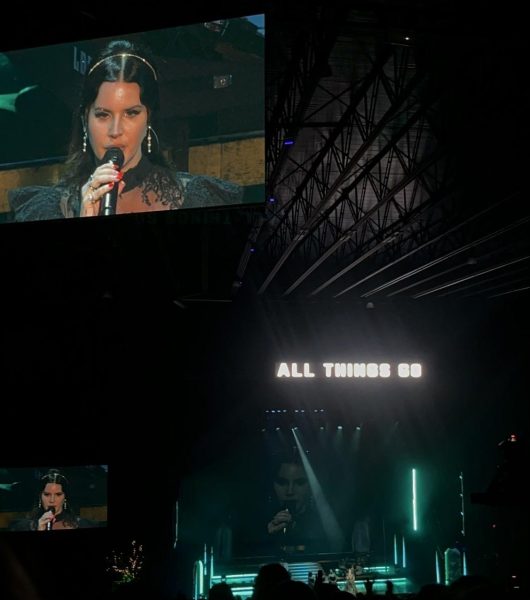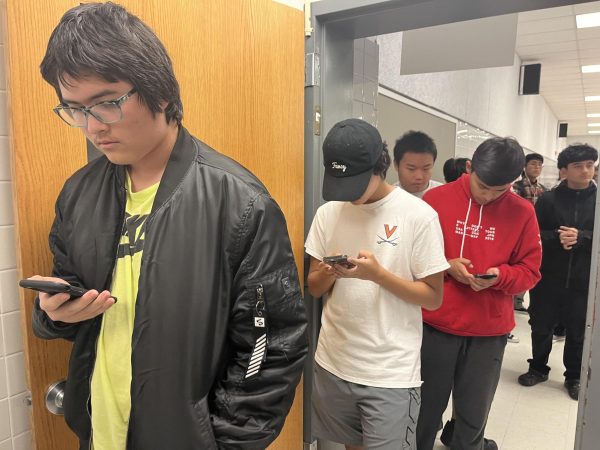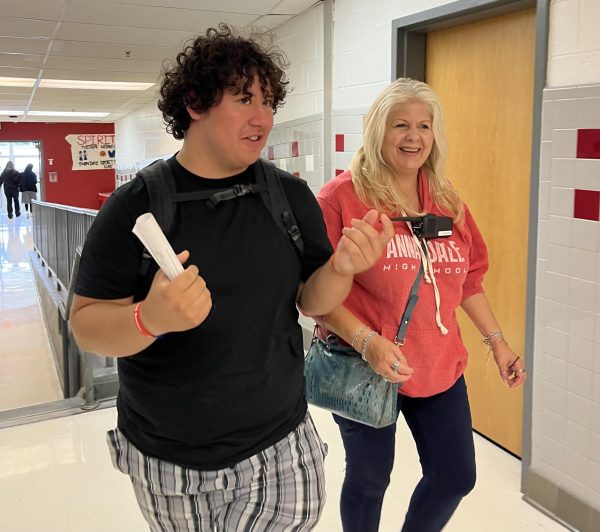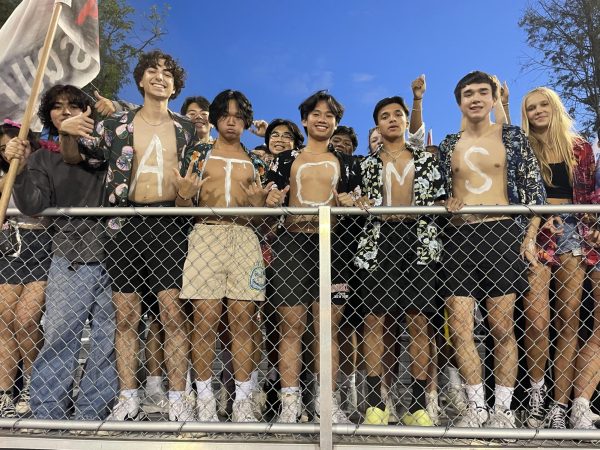Dress Code: is it biased?
Students address the clothing policy
To write out a list of rules regarding how students should dress during school hours is understandable, even invited.
But when teachers and administrators pinpoint certain students rather than others, it becomes an issue.
For instance, take a girl who is tall and thin. Most of the time, she can get away with wearing a tank top or something similar without it being a problem or a distraction.
Now take a girl who’s a bit on the shorter, or one who’s a bit “bigger.” Chances are, if she were to wear a tank top to school, she’d get dress-coded before her first class.
It’s hard to understand why one girl can freely walk the halls with the band of her bra on display while another can barely make it out of her car, and only because of a difference in their measurements.
To tell a girl, or anyone for that matter, that they can’t dress for the weather because of their body type is no longer a dress code issue, but practically equates to body-shaming. Students should not be penalized for something they can’t control.
This comparison, however, is not only seen between girls (though that usually is the case), but between different genders as well.
Clear examples appear many times as you walk these halls, in that boys can get away with wearing certain clothing when girls can’t.
If a boy is allowed to wear a tank top or a muscle shirt without an issue, then shouldn’t girls be allowed to do the same? And while schools are trying to cut down on the number of instances, boys sagging their pants or shorts is still a glaring problem.
In our opinion, this should be taking priority over whether or not a girl’s bra strap is showing. When every boy is forced to wear their pants the way they should be worn, we can begin to talk about bra straps.
Tank tops are not the only dress code “violation” that people are skating around. When school first starts, around the end of summer, girls are still wearing shorts and skirts to help stay alive in the August heat, before making way for cozy sweaters and leggings that come with the colder months that come ahead.
However, nowadays it’s practically impossible to find shorts, skirts, or dresses that meet the school’s dress code.
Even the more practical stores like Old Navy and Kohl’s have started doing away with the longer shorts and knee length skirts in favor of the more popular “booty” shorts and “mini” skirts that we often equate with Hollister or Abercrombie and Fitch.
Not that there is a problem with these items of clothing, it just makes it harder to find clothes that will meet the county’s already unreasonable standards.
In an effort to appease the school system yet still wear what they want, girls have started wearing sheer tights underneath their shorts and skirts, but it doesn’t have the same effect that wearing no tights would provide.
The point of wearing shorts is to keep cool, but that does very little to help when you still have to cover up with tights or leggings underneath. In 100 degree weather, you might as well be wearing jeans.
For many girls, the issue of shorts’ length arises when their height comes into question. Girls with shorter legs are able to get away with a pair of shorts that a taller girl wouldn’t, simply because of how tall they are, even though neither girl’s arm reaches the bottom of the seam.
This readdresses the issue from before; you can’t penalize a girl for having long legs. The length of your legs or the width of your hips is completely out of your control.
Girls in high school already have a skewed image of what they think their body should look like. By telling them that if you had the exact same pair of shorts as another girl, you would get dress coded before her because she’s a size two and you’re a size eight, or she’s 5’2″ and you’re 5’10” (or vice versa) only increases this dissociation between how they view themselves and others in society.
This promotes the idea that you have to look a certain way in order to be successful in life.
What a girl wears should have no relationship on how she is viewed by others. Enforcing a dress code that persuades girls to remain completely covered because “boys will be boys” only encourages the sexualization of body parts that need not be sexualized.
While we realize the need for a dress code in a professional environment, the one we have now is severely outdated and a bit unrealistic.
One of the current flaws is found in the fact that dress code violations are left up to the individual teacher’s discretion.
While it allows for bias, it can also make many girls feel uncomfortable. If you were to get caught by that one conservative teacher who was already in a bad mood, you’ll be in big trouble; even if any other teacher who happened to see you had no problem with the outfit.
One of the goals of every school is to ensure the well being and safety of its students.
For many, having a teacher, especially a male one, point out something about their clothing or body to them, can make them feel unsafe, even violated.
By providing a dress code that gives one universal list of what must be covered, it makes it easier for teachers or administrators, as well as less uncomfortable for students.



